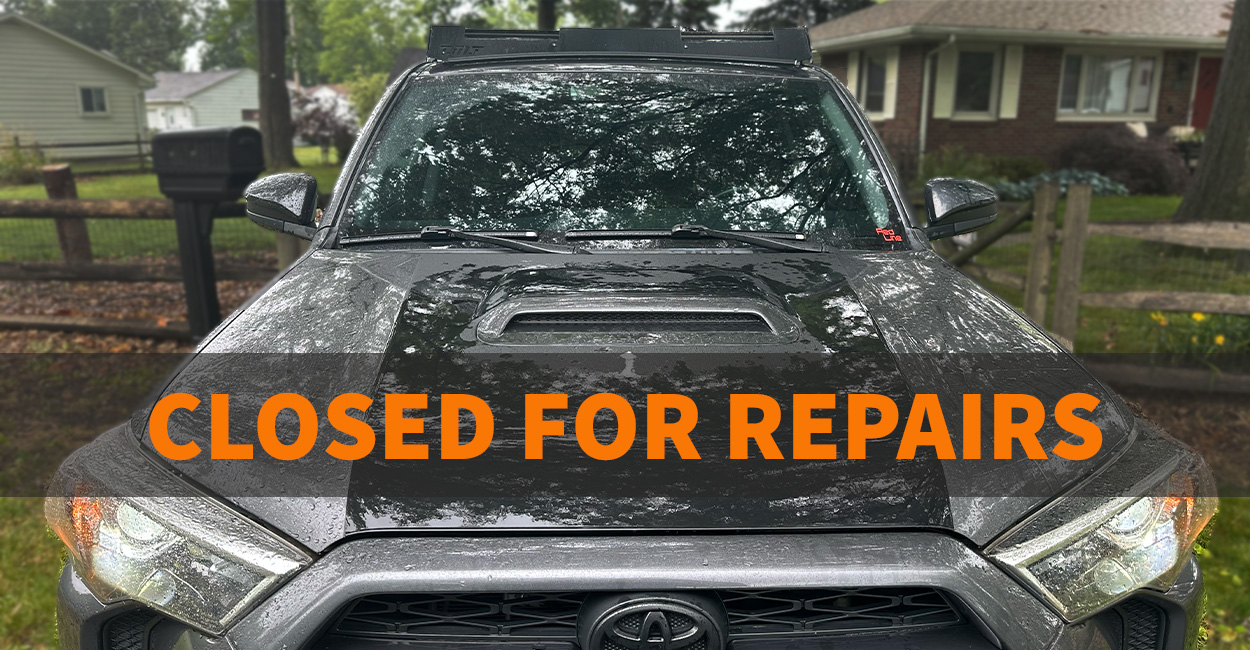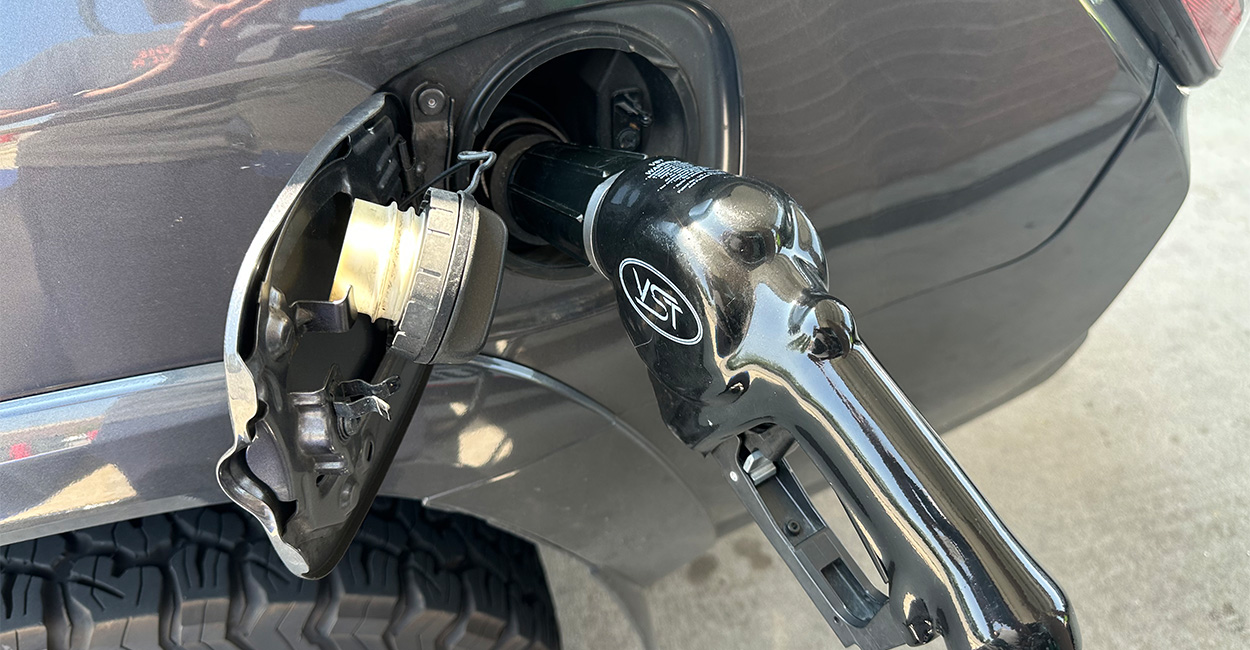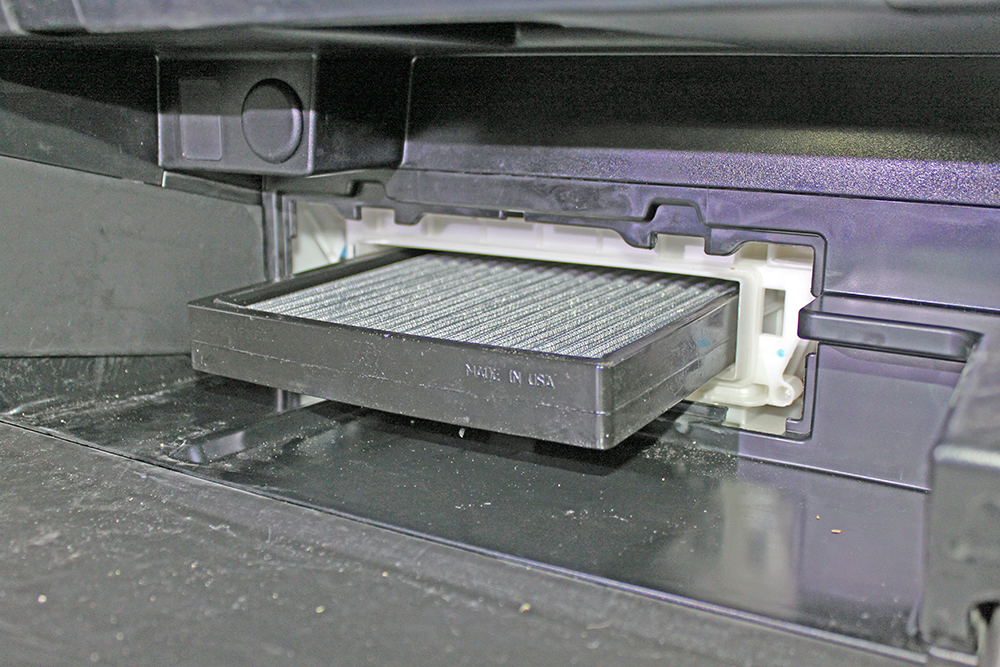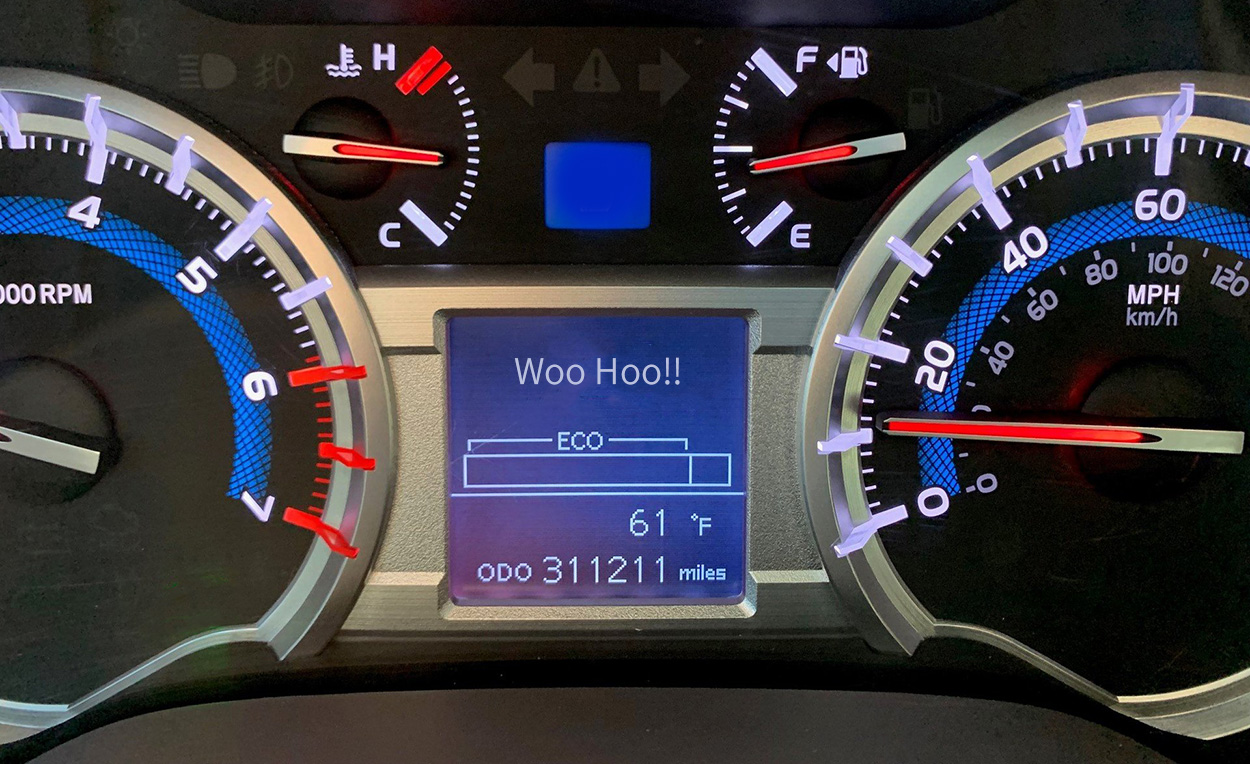
We love our trucks; they’re like members of the family. The 5th Gen 4Runner is known to be pretty much bulletproof. At the end of the day, however, it’s still a vehicle. In this post, I’ll detail my top maintenance tips to keep your 4Runner running longer. A lot of the advice also applies to the Tacoma and most other vehicles.
Whether you do the work yourself or pay someone, know the “right” and “wrong” way to treat your babies. Let’s get started!
Table Of Contents
Fuel

Filling up is simple; insert the nozzle and pump until the tank is full, right? Wrong. Toyotas – and all other modern vehicles – employ an evaporative emission system (EVAP). It’s designed to reduce vapor emissions, help conserve a little fuel (nothing that really makes a difference to mileage), and reduce impacts on the environment.
If it doesn’t help my mileage and I don’t care about the environment, why worry about it? Overfilling causes liquid fuel to enter the EVAP canister which will eventually become saturated and fail to perform properly. You won’t know it’s happening until the Check Engine light comes on and you’re replacing the system to the tune of about $500 or several hours of your weekend.
The rule for fuel is to pump until the auto stop kicks in and is done.
Battery

Find it online:
- Odyssey Group 34: Check Price
Modern gadgets are amazing. GMRS, iPads, GPS – how did we ever get through a trip in the ’80s?
All those toys need power and it’s tempting to wire them directly to the battery. Don’t do it. Most modern electronics draw standby power to maintain memory and speed startup times. One or two power hogs are no big deal but the more you add, the more draw you put on your battery. Eventually, you’ll be drawing too much.
Avoid the dreaded click-click-click of a dead battery and install switches for any 12-volt accessories that don’t require constant power in addition to inline circuit breakers that you can disconnect at any time.
Oil Change Intervals

Find it online:
- 6.6 Quarts of 0W-20 oil (Mobil 1)
- OEM Oil Filter or the TRD Oil Filter
- Funnel
- OEM Oil drain plug gaskets
Full synthetic oil is good for 10,000 miles, which is why that is the 4Runner’s “recommended” oil change interval. I’m here to tell you to change the oil every 5,000 miles.
The first time you do a 5,000-mile service, you’ll wonder why because the oil will still look pretty clean. That’s what you want. Your engine is the heart of your truck and the oil is the blood. Keeping the oil clear is critical to rolling the odometer past 300,000 miles. Plan to sell your truck long before then? Regular 5,000-mile maintenance adds to your resale/trade value.
If you’re thinking about “upgrading” from the plastic oil filter housing to the metal one because the internet said so, don’t. Knock-off canisters frequently offer bad fitment and the build quality can be comically inferior. Check out this video by the Car Care Nut if you don’t believe me. You could end up with a seized canister which is a huge pain to remove. As long as you don’t over-tighten the plastic oil filter housing, you shouldn’t have any issues.
Change your oil every 5,000 miles and use genuine Toyota oil filters and housings. OEM is always the win.
Rotate Tires

Oil changes and tire rotations just happen to be on the same maintenance schedule. This might be slightly less important if you’re running highway tires. For those of you with more aggressive A/T or M/T tires, don’t skip rotations.
The unfortunate reality is that every mile we drive tears a little more tread off our tires and it doesn’t happen evenly. The longer we drive, the more uneven the tires become, until it starts to affect handling and fuel economy. Rotating your tires every 5,000 miles will help them last longer and save a little gas.
Rotate your tires at every oil change. It’s so much easier to remember that way.
Valve Stem Caps

Find it online:
- TRD Valve Stem Caps: Check Price
For most people, valve stem caps are like their appendix. We all have ’em but most of us never understood why. Start going off-road more and the answer might come in the form of an unwelcome surprise.
Valve stem caps keep debris out of the valve stem. City drivers rarely notice a difference with or without them. Take your 4Runner off-road – or just have bad luck – and you could quickly learn that the tiniest grain of sand can cause the stem to hold open and you’re hoping the next guy down the trail has on-board air.
Make sure you have caps on all your tires, especially if you frequently air up and down for the trails.
Engine Air Filter

Find it online:
- BMC Air Filter: Check Price
- OEM 4Runner filter: Check Price
If the engine is the heart and the oil is the blood, then your air intake and filter are the lungs of your truck.
This picture is a pretty good example of a filter that is overdue to be changed. It doesn’t take much to affect the air/fuel mix, leading to inefficient burning and deposits. Sure, you could continue to use this filter but the result could be shorter engine life.
Check your engine air filter at every oil change and replace it if moderate to severe dirt is visible.
Cabin Air Filter

Find it online:
- K&N VF2000: Check Price
- OEM 4Runner filter: Check Price
I’m willing to admit that I’m not the neatest person in the world but I consider myself clean. I think that describes a lot of us, especially where cars are concerned. If you’ve ever dealt with mystery smells, you’re not alone. You empty everything out, vacuum the carpet, clean the upholstery, and two weeks later it’s back. Does that warrant a $300 detail?
Before you go that route, check your cabin air filter. It’s tucked behind the glove box and thankfully, Toyota made it really easy to replace yourself. You can find a step-by-step guide here. You might be surprised how much junk is in the old filter – including mold and mildew. Changing it out could be the solution to your stink.
Check/change your cabin air filter at least once a year. It won’t make your truck last longer but it’ll be a lot less funky.
Final Thoughts

I know, a lot of people will tell you that this stuff is unnecessary.
I’ve personally dealt with the aftermath of NOT doing them – a blown engine, premature tire wear, flat tires, old car smell, you name it. You don’t have to take my word for any of this but don’t say I didn’t warn you.
Of course, there is more to maintaining a 4Runner. For instance, if you have a 4WD model, you need to exercise it by driving in 4WD at least once a month. The same is true for your emergency brake. Learn everything you can, treat your 4Runner right, and it’ll be a part of your family for a long time.

Good day,
I am off road more than on road. It is good being retired. My 4WD gets exercised at least once a week. That includes the 4WD low range, the transfer case front/rear lock ups, and making all 4 wheels locked up.
Your advice is good, easy steps to get the owners into the preventive maintenance mood, and actions.
I have a friend that did not exercise his 4WD for a couple years. The snow wasn’t bad, or deep enough, and he did not recall seeing it in the manual. Not a Toyota, but exercise is a good thing.
Last year we had many feet of snow, many days in a row. His front two wheels would not lock up. Seems the “servo type motor in his transfer case was locked up.
He spent a lot of money, not mechanically inclined.
Those of us with functioning 4WDs drove him around, or delivered groceries.
Good advice. Also, every 60K drain and fill (not flush) the transmission.
The problem with what Old Dude is saying is that, while he had a good outcome, not everyone will. Today’s cylinder wiper on the piston isn’t that strong for better gas mileage. That means crud can build up on the cylinder wall. That can become a problem if you stick with oil changes every 10K miles. Ask the Car Care Nut. I’ll take to heart what the CCN says any day over what anyone else says.
As to AGM “bling,” an overlanding vehicle has different needs from stock. Make sure your AGM is getting the proper voltage. Most stock systems require a minor mod to have that happen.
Always done the oil changes at the recommended intervals with full synthetic. Supported by oil analysis every 4th change from blackstone labs. Never had any wear issues in any of my reports on multiple 300k+ Toyotas. Save your money.
AGMs are just bling for most people. Routinely check battery health, get a quality Interstate or similar battery, it’ll be reliable and leave money in your pocket.
Do the prescribed maintenance and keep it clean you’ll be fine.
Overall, if you keep your vehicle stock, sure. It’s when the vehicle is no longer stock, then things need to change. Check out the Car Care Nut on YT. I trust what he has to say a lot more because of his training and experience.
Why do you recommend installing an AGM battery without discussing its peculiar voltage requirements? Certain mods in the fuse block need to be done. Otherwise, the 13.7 volts the alternator puts out, more or less, will kill the AGM battery over time because that battery needs to see at least 14.2 volts. 14.6 is even better.
Lol, this website is going to sh**
stemcaps will definitely keep
you 4runner running longer
xD
No love for oil catch cans?
As for the metal oil housing I beg to differ that you or the car care nut has a point about retaining the plastic housing respectfully. I put a genuine Toyota one on and changed out the internal syphon properly as many others have done and alls been well. Knockoffs are always a bad choice but oem metal housings are solid, especially if you’re not doing your own oil changes.
Don’t disagree with you at all. My comments were focused on aftermarket parts (especially the cheap ones). The number of people putting Amazon and alibaba parts in critical applications is mind-boggling.